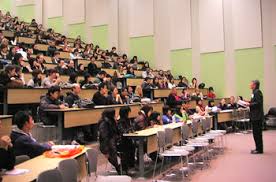Analysis of sign language proficiency among teachers of the deaf in primary schools in Bulawayo (Zimbabwe): Implications for learning and inclusion
Keywords:
Sign language, Language proficiency, Deaf learners, InclusionAbstract
Sign Language proficiency among teachers of the deaf form the basis for effective learning by deaf children. It is also the bedrock of successful inclusion. Previous studies and literature have equivocally confirmed that young children who are deaf learn more effectively when taught using Sign Language. The current study sought to establish the level of Sign language competency among teachers of children who are deaf in 10 of the primary schools in Bulawayo that enroll children who are deaf. A descriptive survey and ex-post facto research designs were employed in soliciting data from a sample of 15 teachers of the deaf and 5 college lecturers. Data were collected using a structured questionnaire and a Modified Sign Language Proficiency Interview (MSLPI) on a 6-Point rating scale. Document analysis and observation were used to authenticate responses from college lecturers and teachers of the deaf respectively. The Statistical Package for Social Sciences (SPSS) and descriptive summaries were used to analyse data. The data indicated that teachers of the deaf in Bulawayo lacked Sign Language proficiency. They could only afford the lowest two scores on the (MSLPI) scale that is the Novice and the No Functional Skills levels. What teachers at times mistook for Sign language was mere finger spelling and some distorted signed systems. From these findings the study concluded that the learning of the deaf children in primary schools in Bulawayo was heavily compromised due to lack of effective communication between teachers and the learners. The study also concluded that the inclusion of deaf children in the schools would remain a pipe dream as long as the teachers were not proficient in Sign language which is the first language of the deaf. The study recommended regular Sign Language staff development programmes, intensification of the practical component of Sign Language in the college programme for trainee teachers of the deaf, external scholarship and exchange programmes for both teachers and college lecturers who train teachers for the deaf.
References
‘O’ Reilly, S., 2005. Indigenous sign language and culture: interpretation and access needs 11(3), 225-233.
Acton, Q.A., 2012. Advances in manual communication and application. Atlanta: Scholarly
Adoyo, P.O., 2002. Emergent approaches towards sign bilingualism in deaf education in and south African sign language. South. Afr. Ling. Appl. Lang. Stud. 30(1),25-37.
Aunola, U., Kulterer, C., Miettinen, K., 2006. Curricula for sign language as a mother tongue; written language as a second language for the deaf (teacher’s guide).VammalanKirjapainoOg : DEAFVOC.
Cawthon, S.W., 2001. Teaching strategies in inclusive classrooms with deaf students. J. Clevedon. Multilingual Matters.
Cohen, L., Manion, L., Morrison, K., 2007. Research methods in education (6th ed). London: Routledge. Communication and SLPI-ASL rating levels.Silver Spring: RIT.
Cummins, J., 2000. Language, power and pedagogy: bilingual children in the crossfire. DEAFSA., 2009. Deaf learners and their education rights: is south Africa listening? edition. education.Paris : UNESCO.
El-zraigat, I., 2009. Hearing loss: principles of audiological, speech and education emmorey, K., Lane, H., 2000. The signs of language revisited: an anthology to honour emphasis on education of H.I. and causes of their semi-literacy. unpublished thesis: Kenyatta university.
Evolution of a language community in ahlgren and hyltenstam, I.K. (Eds)bilingualism in deaf education.Hamburg: Signum. Gee, J., Wendy, G., 1985. Nativization linguistic theory and deaf language acquisition. Glaser, M., Van Pletzen, E., 2012. Inclusive education for deaf students: literacy practices hoemann, H.W., 1983. Communicating with deaf people. Baltmore university park press. impairment: sign language.Harare: ZOU. Kenya. Stichproben 3(2), 83-96.
Kiyaya, N.B., Moores, D.F., 2009. Deafness in sub-saharan Africa. In Moores, D.F. and Miller, M.S. (Eds). Deaf people around the world. Washington DC: gallaudet language and deaf culture. Manitoba: Manitoba. Educ. Citizen. Youth. Language. New Jersey: NJ department of education.
Makumi, E.C.N., 1995. A study of special education programmes in Kenya with special Manitoba curriculum framework of outcomes. (2009) Language Competence: American Sign.
Mayer, C., Akamatsu, C.T., 2003. Bilingualism and literacy. In Marschark, M. and Spencer, Musengi, M., Regis, C., 2012. Inclusion of deaf students in mainstream rural primary newell, W., Caccamise, F., 2007. Skills important for effective sign language Nigeria: teachers’ perceptions. Int. J. Rehab. Res. 11(3), 382-388.
Nikolaraizi, M., 2000. The need for specialist training in the education of deaf pupils in of deaf people who are of aboriginal/torres-strait islanders in north Queensland. Canberra: ASLIA. of deaf studies and deaf education 6(3), 212-225.
Okombo, O., 1994. Kenyan sign language. some attitudinal and cognitive issues in the Oxford: OUP.P.E. (Eds) Oxford handbook of deaf studies, language and education. Profoundly hearing impaired children – intelligence, learning and communication factors: Current Psych. Res. Rev. 5, 62 – 73.
Rajagopal, S., 2003. Site visit to jeevan Granodaya school of the deaf. Nadu: HTML Rehabilitation.Amman: Dar Al-Fiker. Savage, R. J., Savage, J., Evans, L., Potter, J., 1986. Language and Reading Development in Schools in Zimbabwe: challenges and opportunities study tribes tribals 10(2), 107-116.
Sheehan, T., Albritton, C., Quinlan, C., 2011. Requirements for teaching american sign sibanda, P., Gwitimah, A. R., Chimhenga, S., 2014. Communication for people with hearing sign language studies. 49, 291-342.
Teachers’ perceptions.international journal of rehabilitation research Togonu-Bickersteth, F., 1988. Prospects and challenges of educating deaf pupils in Nigeria:UNESCO., 1994. The salamanca statement and framework for action on special needs university press. Ursula Bellugi and Edward Klima. London: Lawrence Erlbaum Associates. wwwdeafsa.og.za (Accessed 13/04/15).

Downloads
Published
How to Cite
Issue
Section
License
Copyright (c) 2020 Patrick Sibanda

This work is licensed under a Creative Commons Attribution-NonCommercial-NoDerivatives 4.0 International License.



